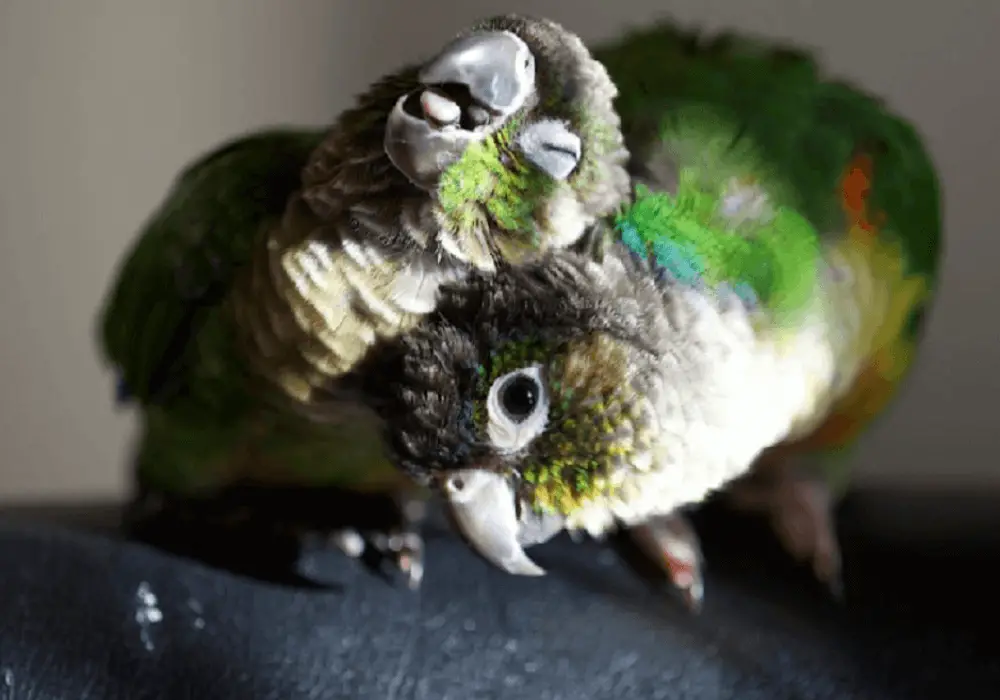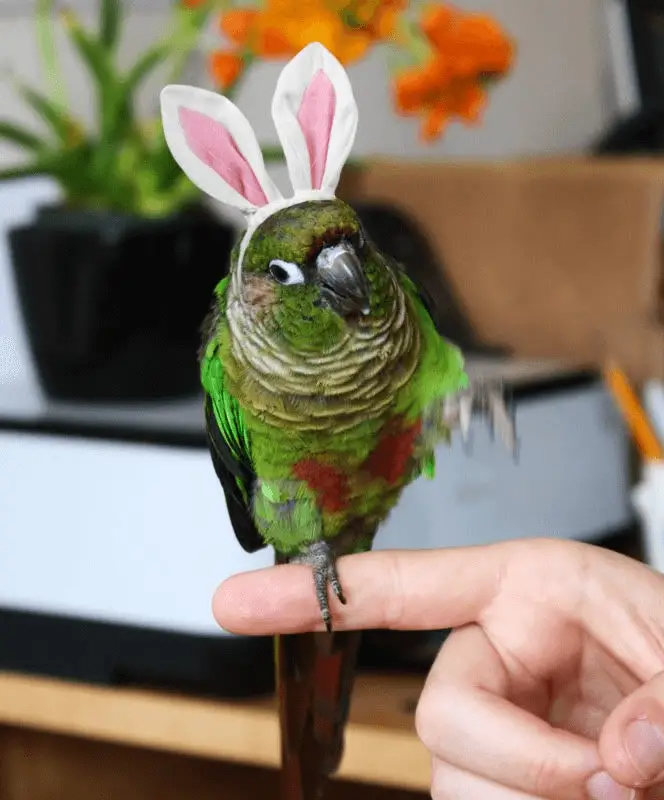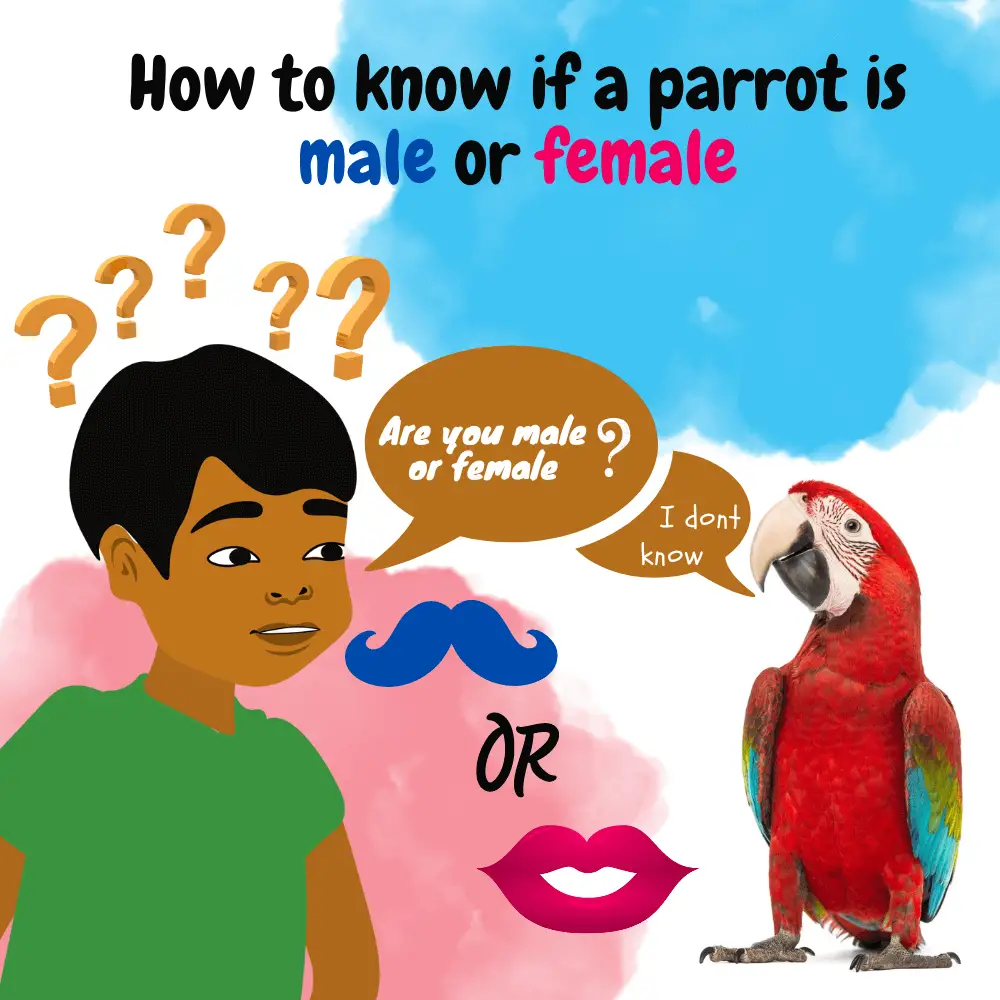How to recognize a male from a female Conure: The Green-cheeked Parakeet, or Pyrrhura molinae molinae, is a small parrot with a seductive gaze
Green cheek conure male vs female
How To Tell The Gender of a Green Cheek Conure
The Green-cheeked Parakeet, or Pyrrhura molinae molinae, is a small parrot with a seductive gaze The Green-cheeked Parakeet, or Pyrrhura molinae molinae, is a pretty parrot of 26 cm from Bolivia.
It weighs 70 g. Its plumage is green, with red feathers on the top of the tail. The flight feathers are blue, and the feathers on the throat, top, and back of the head and tail are brown. The skin around the eye forms a large white drop, highlighting her intense brown eyes.

How to differentiate male and female conure
When buying or adopting a parrot, remember to find out about its species. Each type of parrot looks different and behaves differently. For some, distinguishing the male from the female is easier. In the case of the widow parakeet, the best course of action is to wait for the parrot to lay eggs.
- Some females only lay eggs from the age of 10 and you will have to wait a very long time before knowing the sex of your parrot.
- You can try to guess the sex of a widow conure from certain behavioral traits. For example, males may shake their tails vigorously from side to side during mating season. The females shake it up and down.
Green cheek conure gender behavior differences
Purple reflections are visible on its chest and beak. There is no sexual dimorphism (visible difference according to sex) in this species. A DNA test will therefore make it possible to determine with certainty whether your future companion is a male or a female.
The Green-cheeked conure, or Pyrrhura molinae molinae, is a small parrot with a seductive gaze Six
Immature individuals have duller plumage than adults, a darker iris, and less brownness in their abdomen. They are of age to reproduce from two years.
The female lays between 4 and 6 eggs, which she will incubate for 22 to 25 days. A nest of 30 X 30 X 30 cm is ideal to accommodate the laying.
The young leave the nest about two and a half months after birth. Here is a video showing a four-week-old juvenile, which is sure to melt you down:
 How to recognize a male from a female Conure
How to recognize a male from a female Conure
The Green-cheeked conure, or Pyrrhura molinae molinae, a small parrot with a seductive gaze A balanced diet (without excess oilseeds) and optimal maintenance conditions easily ensure the well-being of the Green-cheeked Parrot, d ‘especially since it is a robust species.
A spacious cage is indicated (at least 1.20 m X 65 cm X 1 m), as it may be required to spend long periods there.
She needs to exert herself, which means taking her out as often and for a long time as possible. Everyday objects such as pens fascinate her.
This psittacid feeds on a varied mixture of seeds, but also nuts, figs and other fruits (apple and grape in particular) and fresh vegetables (endives, peas, corn on the cob, sweet potatoes, spinach, watercress, wild salads), poppy, chickweed, dandelion, and millet.
It should not be given avocado because it is a poisonous food. Mealworms may be offered to him from time to time.
A cuttlefish bone and oyster shell fragments placed in a dish will provide him with minerals. Find out more in our topic on how to eat it in the wild.
The Green-cheeked conure, or Pyrrhura molinae molinae, is a small parrot with a flirtatious look.
A protein supplement can also be on their menu in the form of hard-boiled eggs, peanuts, hard cheese, and even small amounts of dog food. Its water, changed daily, will be supplemented with vitamins and calcium.
In captivity, you should still limit the intake of rich foods, as the parrot is more sedentary than in the wild.
She has a great need to chew to wear down her beak, so care should be taken to provide her with a mineral block, as well as toys that she can use to limit growth.
A fan of climbs of all kinds, this is also an easy subject to learn and particularly sociable. The Pyrrhura is quieter than the Aratinga, which makes it an easy-going animal.
She is lively, curious, facetious, and greedy, but also very close to her human being, of whom she can try to seek exclusivity.
She has an excellent character but can squeeze quite hard, so be careful around guests or small children. Its detention does not require special authorization in captivity.is
My conure male or female
SOURCE: TheParrotTeacher
How to know if a parrot is male or female

You must know the sex of your parrot in order to understand its behavior and its different moods depending on the time of year if you want to find a companion for it or for medical reasons. Some will want to know the sex of their bird in order to find an appropriate name for it!
From a medical point of view, it is preferable to know the sex of the parrot. Between a male and a female, the diagnosis may differ. Obviously, a male cannot have a retained egg this situation can be quite common in females of small species. Any other reproductive issues can also differ between males and females. With this in mind, sexing can greatly help your veterinarian when developing the diagnosis.
Parrots are not operated like our cats and dogs and hormones can occasionally trouble your relationship with your parrot. Each individual and each species reacts differently depending on the time of year. During the breeding season, females may be more affectionate while males may be more territorial.
Previously, sex had to be done surgically, by endoscopy. The endoscope is an instrument that is used to visualize the internal organs and thus determine if it is a male or a female. Fortunately, this technique, performed under anesthesia, is no longer necessary today.
Some species exhibit sexual dimorphism, a physical difference visible to the naked eye. Here are some examples:
In the parakeet, the color of the cere, located just above the beak, is brownish-pink in the female and blue-purple in the male. It is necessary to wait until the parrot is at least 6 months to 1 year old before being able to determine the sex accurately using this technique.
As for the Cockatiel, certain colors such as the standard gray, the orange cheeks and the yellow head differentiate the male from the female, the latter having a gray head. Again, young people under 6 months of age all have gray heads.
For other species such as Eclectus, the difference is striking. In this species, the male has a green body and beige beak while the female has a red and purple body with a black beak. For a long time, experts believed that these were completely independent species.
The most effective way to determine the sex of a parrot that does not have sexual dimorphism is DNA sexing. A simple blood sample or even a growing feather containing blood can be used. The sample is sent to a laboratory that performs this test and the result arrives a few days later. A certificate containing your information as well as that of your bird will also be given to you. This technique is painless and quick. The cost is affordable and the sample is taken within minutes during your visit.
Parrot egg
Look for the parrot egg: The best way to identify the sex of a parrot is to see whether or not it lays eggs. Only females are capable of this. In nature, the female parrot lays eggs only after mating with a male. In captivity, she may or may not lay eggs in her cage.
- Parrots only lay eggs after reaching sexual maturity. For most parrots, this happens from 3 years old.
- Egg laying can have a negative impact on a parrot’s health. If you have a single parrot that lays eggs, contact a veterinarian.
Parrot DNA test
Perform a parrot DNA test: Most people don’t want to wait years to find out the sex of their parrot. For example, if you keep parrots, you’ll probably want to know if your birds are sexually compatible. A DNA test can be performed with fairly accurate results, but not 100% sure.
- Ask the vet if he does DNA testing.
- There are labs you can send samples to. You will need to follow the specific instructions to ship either a feather or a claw.
Parrot gender identification surgically
Perform gender identification surgically: This method should be performed by an experienced veterinarian. Without knowledge of animal medicine, you will not be able to find and identify your parrot’s sex organs. Ask your vet if they perform this operation or if they can recommend someone who does.
- This method has been used only rarely since the advent of DNA testing.
- Surgical sex identification is mostly used to distinguish adult parrots with no known history. It was reputed to be dangerous for the reproductive system of smaller, younger parrots

